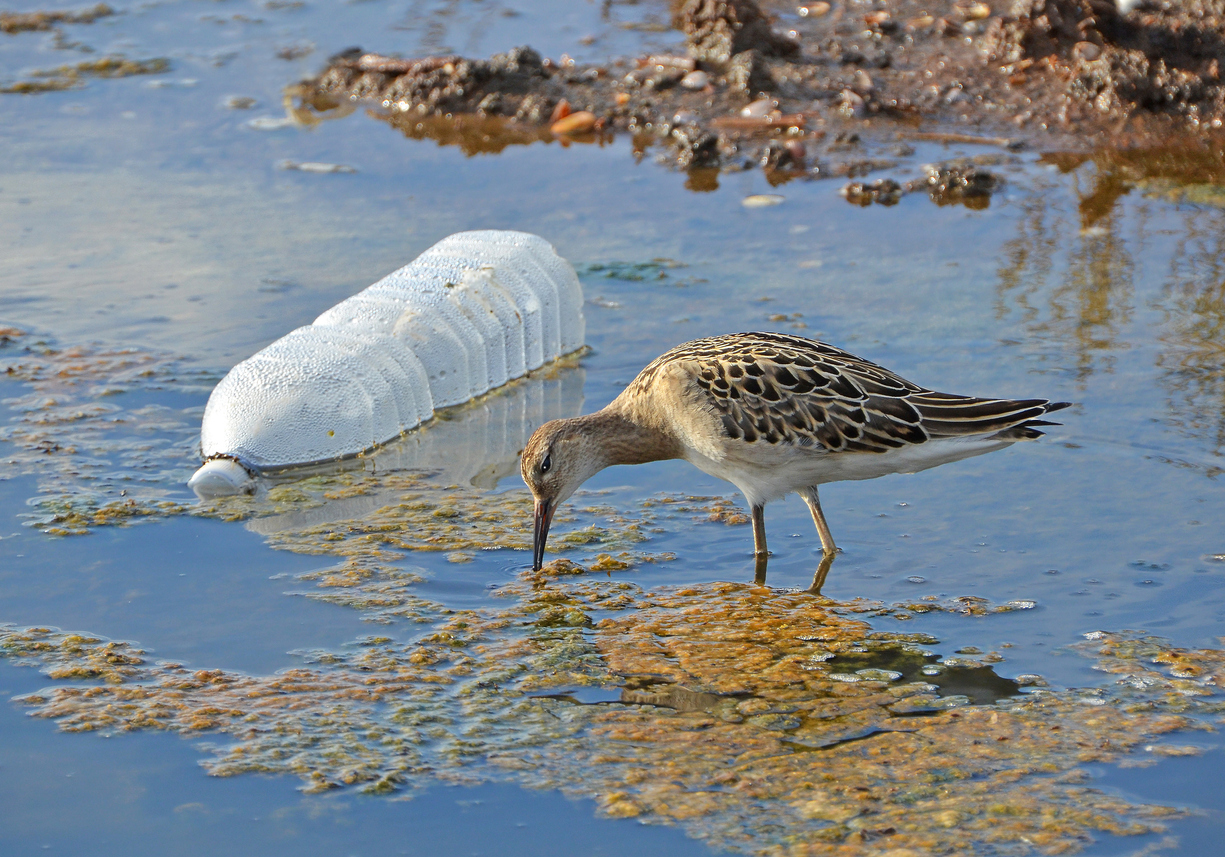
Please sign up to receive the latest stories.
* Your information will be treated securely and confidentially

Please sign up to receive the latest stories.
* Your information will be treated securely and confidentially

1. Plastic never goes away.
Plastic is a material made to last forever, yet 33 percent of all plastic - water bottles, bags and straws - are used just once and thrown away. Plastic cannot biodegrade; it breaks down into smaller and smaller pieces.
» Disposed plastic materials can remain in the environment for up to 2,000 years and longer. Source: DiGregorio, Barry E. "Biobased Performance Bioplastic: Mirel," Chemistry & Biology 2009
2. Plastic affects human health.
Toxic chemicals leach out of plastic and are found in the blood and tissue of nearly all of us. Exposure to them is linked to cancers, birth defects, impaired immunity, endocrine disruption and other ailments.
» Two broad classes of plastic-related chemicals are of critical concern for human health—bisphenol-A or BPA, and additives used in the synthesis of plastics, which are known as phthalates. Source: "Perils of Plastics: Risks to Human Health and the Environment," Arizona State University Biodesign Institute 18 March 2010
3. Plastic spoils our groundwater.
There are thousands of landfills in the United States. Buried beneath each one of them, toxic chemicals from plastics drain out and seep into groundwater, flowing downstream into lakes and rivers.
» There are long-term risks of contamination of soils and groundwater by some additives and breakdown by-products in plastics, which can become persistent organic pollutants. Source: Hopewell, Jefferson; Dvorak, Robert; Kosior, Edward. "Plastics Recycling: Challenges and Opportunities," Biological Sciences 14 June 2009
4. Plastic attracts other pollutants.
Chemicals in plastic which give them their rigidity or flexibility (flame retardants, bisphenols, phthalates and other harmful chemicals) are oily poisons that repel water and stick to petroleum-based objects like plastic debris. So, the toxic chemicals that leach out of plastics can accumulate on other plastics. This is a serious concern with increasing amounts of plastic debris accumulating in the world's oceans.
» Fish, exposed to a mixture of polyethylene with chemical pollutants absorbed from the marine environment, bioaccumulate these chemical pollutants and suffer liver toxicity and pathology. Source: Rochman, Chelsea "Ingested Plastic Transfers Hazardous Chemicals to Fish and Induces Hepatic Stress," Scientific Reports 2013
5. Plastic threatens wildlife.
Wildlife become entangled in plastic, they eat it or mistake it for food and feed it to their young, and it is found littered in even extremely remote areas of the Earth. In our oceans alone, plastic debris outweighs zooplankton by a ratio of 36-to-1.
» Over 260 species, including invertebrates, turtles, fish, seabirds and mammals, have been reported to ingest or become entangled in plastic debris, resulting in impaired movement and feeding, reduced reproductive output, lacerations, ulcers and death. Source: Thompson, Richard C.; Moore, Charles J.; vom Saal, Frederick S.; Swan, Shanna H. "Plastics, the Environment and Human Health: Current Consensus and Future Trends," Biological Sciences 14 June 2009
6. Plastic piles up in the environment.
Americans discard more than 30 million tons of plastic a year. Only 8 percent gets recycled. The rest ends up in landfills, is burned or becomes litter.
» More than 5 trillion plastic pieces weighing over 250,000 tons afloat at sea. Source: Eriksen, Marcus; Lebreton, Laurent C. M.; Carson, Henry S.; Thiel, Martin; Moore, Charles J.; Borerro, Jose C.; Galgani, Francois; Ryan, Peter G.; Reisser, Julia. "Plastic Pollution in the World's Oceans," PLoS One 10 Dec. 2014
7. Plastic poisons our food chain.
Even plankton, the tiniest creatures in our oceans, are eating microplastics and absorbing their hazardous chemicals. The tiny, broken down pieces of plastic are displacing the algae needed to sustain larger sea life who feed on them.
» Contaminated plastics when ingested by marine species present a credible route by which the POPs can enter the marine food web. Source: Andrady, Anthony L. "Microplastics in the Marine Environment," Marine Pollution Bulletin 2011
8. Plastic costs billions to abate.
Everything suffers: tourism, recreation, business, the health of humans, animals, fish and birds—because of plastic pollution. The financial damage continuously being inflicted is inestimable.
» The overall natural capital cost of plastic use in the consumer goods sector each year is US$75 billion. Source: United Nations Environment Programme "Plastic Waste Causes Financial Damage of US$13 Billion to Marine"